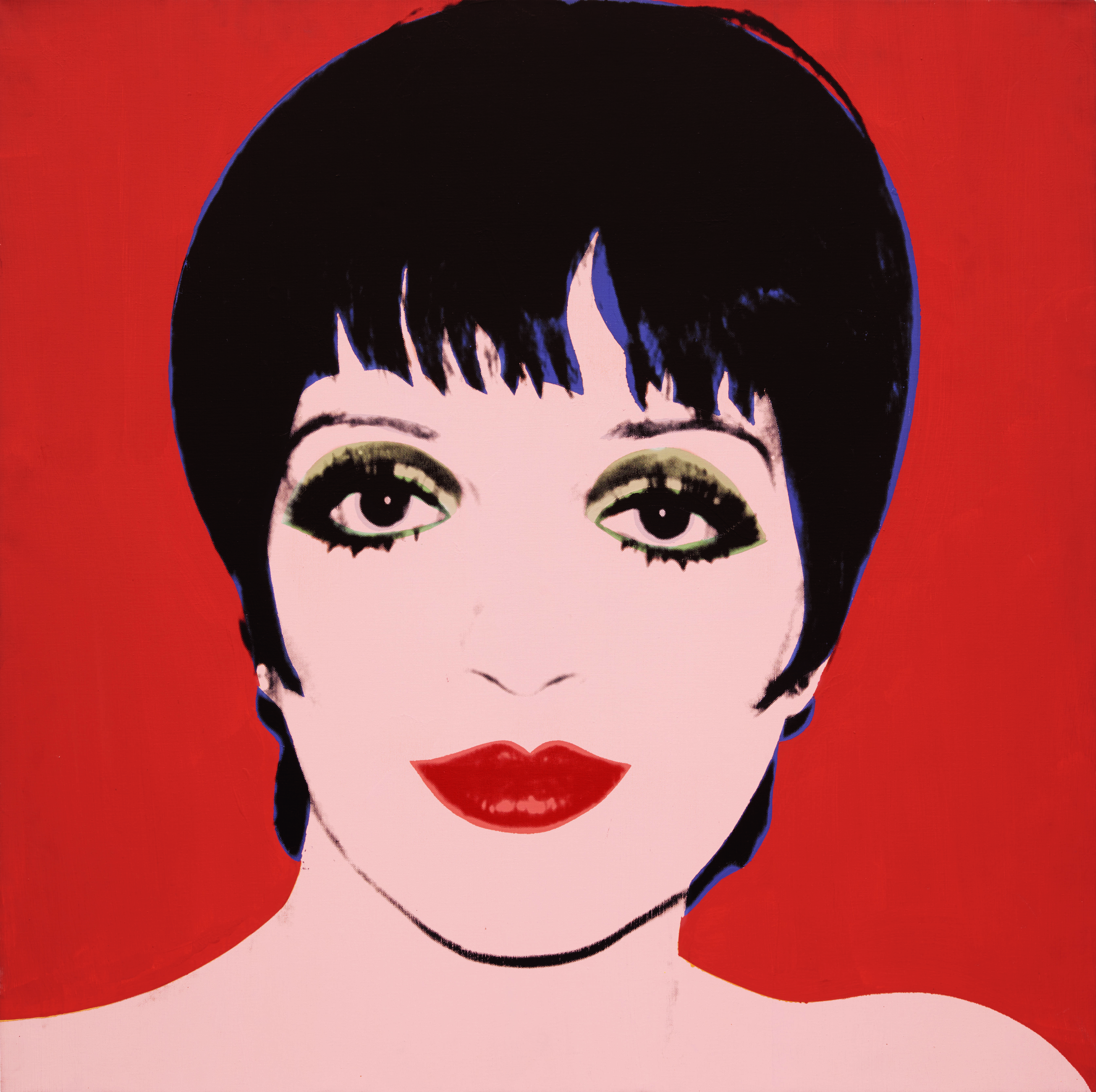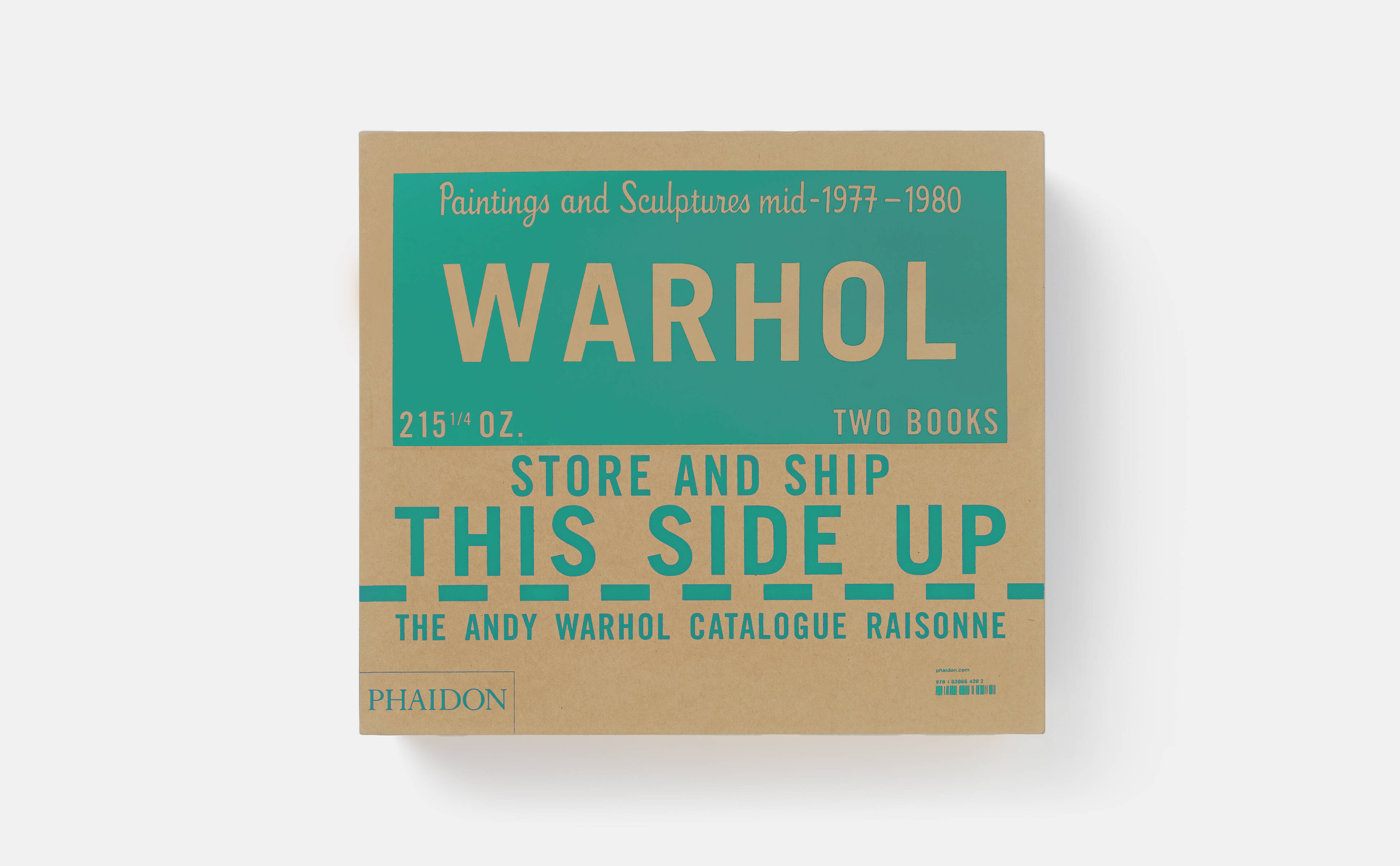
The Story behind Andy Warhol's Portraits of Liza Minnelli
Volume 6 of The Andy Warhol Catalogue Raisonné traces the enormously inventive period of Warhol’s career from mid-1977-1980, including his flourishing portrait practice, with sitters such as Liza Minnelli and Truman Capote documented in this new volume
At 802 pages and consisting of two hardcover books in a slipcase with over 740 paintings and sculptures, Volume 6 of The Andy Warhol Catalogue Raisonné - the highly praised, definitive reference to Andy Warhol’s extensive artistic production - covers an enormously inventive and productive period of Warhol’s career from mid-1977 to 1980.
Today's story focuses on Andy’s portraits of the actress Liza Minnelli with text excerpted from the two-volume set.

“Nineteen subjects sat for their portraits in 1978, and Warhol painted seventy-eight portrait canvases that year. In 1979, the numbers were greater: twenty-six sitters and 108 paintings. This was not insignificant, but it was nothing like the fifty sitters and approximately 150 portraits painted during 1974—a peak year during the 1970s—two years after Warhol had established a systematic portrait practice.
“Several characteristics distinguish the portraits covered in this volume. The first might be referred to as the gendering of Warhol’s portrait subjects by a sort of stylistic code. Warhol painted his female sitters—for example Liza Minnelli, who sat for her portraits in February—in what he called the ‘hard style’ of his 1960s movie star portraits of Marilyn Monroe and Elizabeth Taylor. Beginning with his portraits of the German collector Dr. Erich Marx in May [1978], Warhol would present his male sitters on the kind of gestural and painterly backgrounds he associated with Abstract Expressionism.
“With the Minnelli portraits, Warhol also introduced a crucial innovation in the way he painted women’s lips. The fast-drying Liquitex acrylic paints that he had been using since 1962, when they were first introduced, are matte, but by inserting a titanium white highlight between the hand-painted silhouette of the lips and a separate crimson halftone screen printed over both layers, Warhol could approximate the luster of Minnelli’s glossy lipstick. The technique would become a typical trait in his female portraits for the rest of his career.
“In mid-February 1978, while the portraits of John and Lorraine Chamberlain and Corine Arslanian and her sons were underway, Liza Minnelli visited 860 Broadway to sit for her portrait. On Friday, February 17, Warhol reported in his diaries: ‘Liza came to the office to have her portrait done. She was a little nervous to begin with.’
“Minnelli’s sitting is recorded on one of Warhol’s contact sheets and continues onto six exposures of a second sheet. Christopher Makos also shot two rolls of film that afternoon.
“This was a celebrity sitting. [John] Lennon’s appearance at 860 Broadway may have been unforeseen, but Minnelli was expected, and there was a veritable crowd in the studio that afternoon. In addition to Makos, [Catherine] Guinness and the two brothers [from the rock band Star] from Washington, D.C., Victor Hugo and Rupert Jasen Smith were all on hand; it seems likely that Bob Colacello and Fred Hughes would also have been at lunch before the sitting, but they are neither mentioned in the diaries nor do they appear in any of the exposures on the contact sheets. A photo feature of the sitting published in the Milanese weekly Oggi indicates that an Italian journalist and photographer would have been on the scene as well.
“Minnelli was not only wearing the ‘right makeup,’ she went through three changes of costume during her sitting [designed by Halston, including two from The Act]. In the end, it seems surprising that Warhol shot only thirty-seven Polaroids, but as Minnelli later recalled to a columnist in Harper’s Bazaar, ‘It was so busy down there. [Sitting for Warhol] was fun and very short. He would get what he wanted very quickly; he had an idea.’

“Warhol also reported on Minnelli’s sitting in his book of photographs and reminiscences, Andy Warhol’s Exposures (1979): ‘Liza is always on and I am always off. Liza has what Diana Vreeland calls “built-in show biz”. Whenever Liza walks into a room, everything stops and people wait for the act to begin. The Act was the perfect title for her show. One day she came to the Factory to have her picture taken and all work stopped. The entire staff offered to get her a drink and took one themselves while they were at it. Then they all pulled up chairs and sat around watching her eat lunch. One kid got so excited, he Xeroxed his crotch and gave it to Liza. She got really mad, insulted. And it wasn’t an act. But it was part of the show.’ Minnelli’s nerves, like her anger, may not have been an ‘act,’ but it was evidently ‘part of the show.’
“Another part of the show was the way Minnelli covered the page in Warhol’s studio guest book. After repeating the word ‘Because’ five times, she added ‘Because of the wonderful things he does—I love you baby,’ inserting her name three times in the free space on the page, with the ‘Z’ in Liza as big as the ‘L.’
“When Minnelli’s Broadway show The Act opened at the Majestic Theater three and a half months before her sitting, Warhol attended the gala premiere on Saturday, October 29. It is also reported in [Warhol’s] diaries: 'Liza was on for the whole show. The Halston clothes were beautiful, they really were. I asked Halston to make up a black sequined tuxedo with light blue shoes, too. It was so beautiful, the boy suit. Everything was sequins in all different colors.’
“Minnelli has recalled that although she visited the Factory on more than one occasion, she did not meet Warhol personally until Halston introduced them. This must have taken place in the early 1970s, when she posed for the cover of the August 1972 issue of Interview, holding a Mickey Mouse flash camera and wearing the black derby hat from her star turn in Cabaret, which opened that June. For her role as Sally Bowles in Cabaret, rather than Halston, she had consulted her father, the film director Vincente Minnelli, who advised, ‘Study everything you can about Louise Brooks.’
“For his portraits of Minnelli, Warhol instinctively selected a purely frontal view that showcased her three most salient features: dark eyes ringed by lashes; glossy red lips, silhouetted in a Cupid’s bow; and the black helmet of her Louise Brooks bob with a ragged fringe of bangs at the forehead and twin curls that framed her cheekbones.
“The iconic frontality of Minnelli’s pose and the radical reduction of her features to three points—the cosmetic zones of her two eyes and lips—only intensify the stylization of her portrayal and the transformation of her face into a theatrical mask.”
(Excerpted from Volume 6A, pages 138, 145-148)
The paintings and sculptures reproduced in The Andy Warhol Catalogue Raisonné: Paintings and Sculptures mid-1977–1980 (Volume 6) are accompanied by over 700 images of source materials, the artist’s Polaroids, contact sheets, and archival photographs of gallery and museum installations, as well as related works.
The editors of the catalogue raisonné and a team of researchers scoured the secondary literature, examined thousands of works of art, reviewed the artist’s archives and diary entries, and interviewed assistants, colleagues, portrait sitters, and friends to elucidate Warhol’s materials, techniques, and artistic process. Take a closer look here.